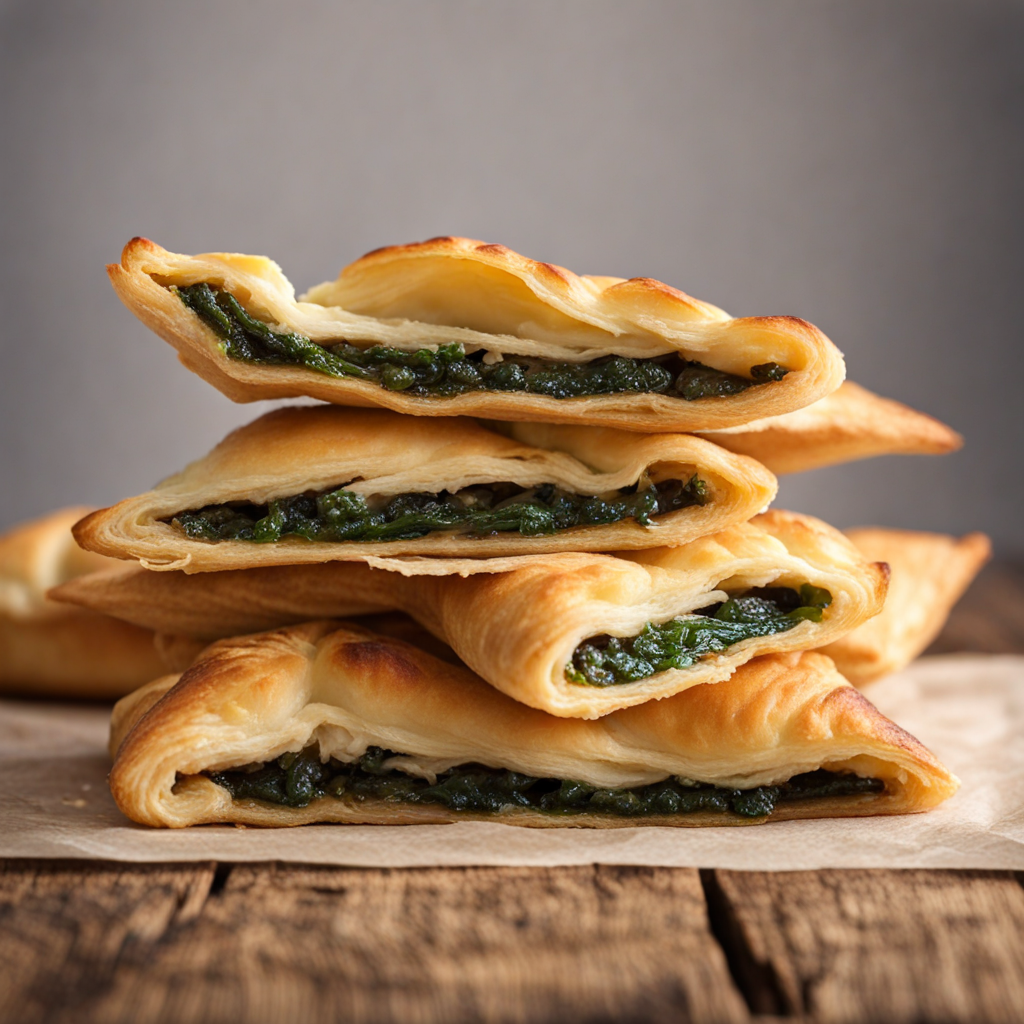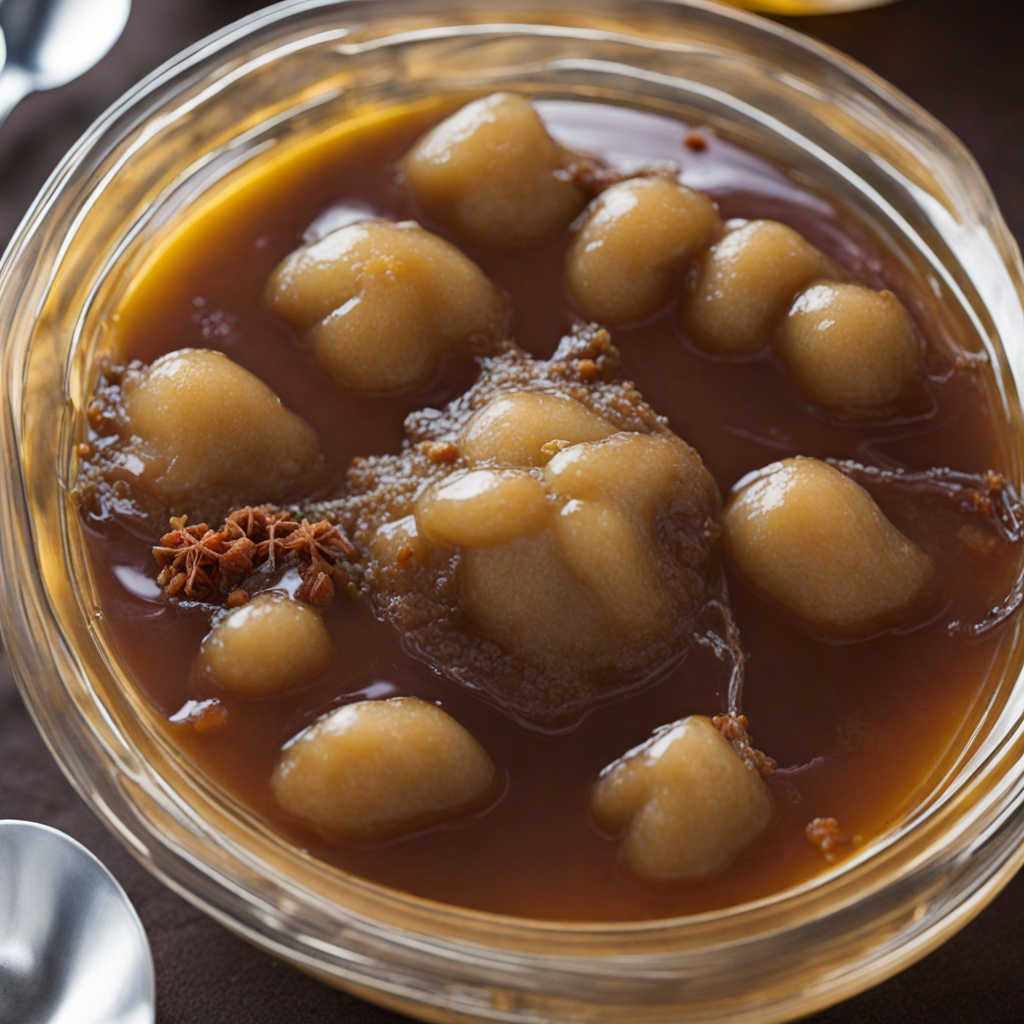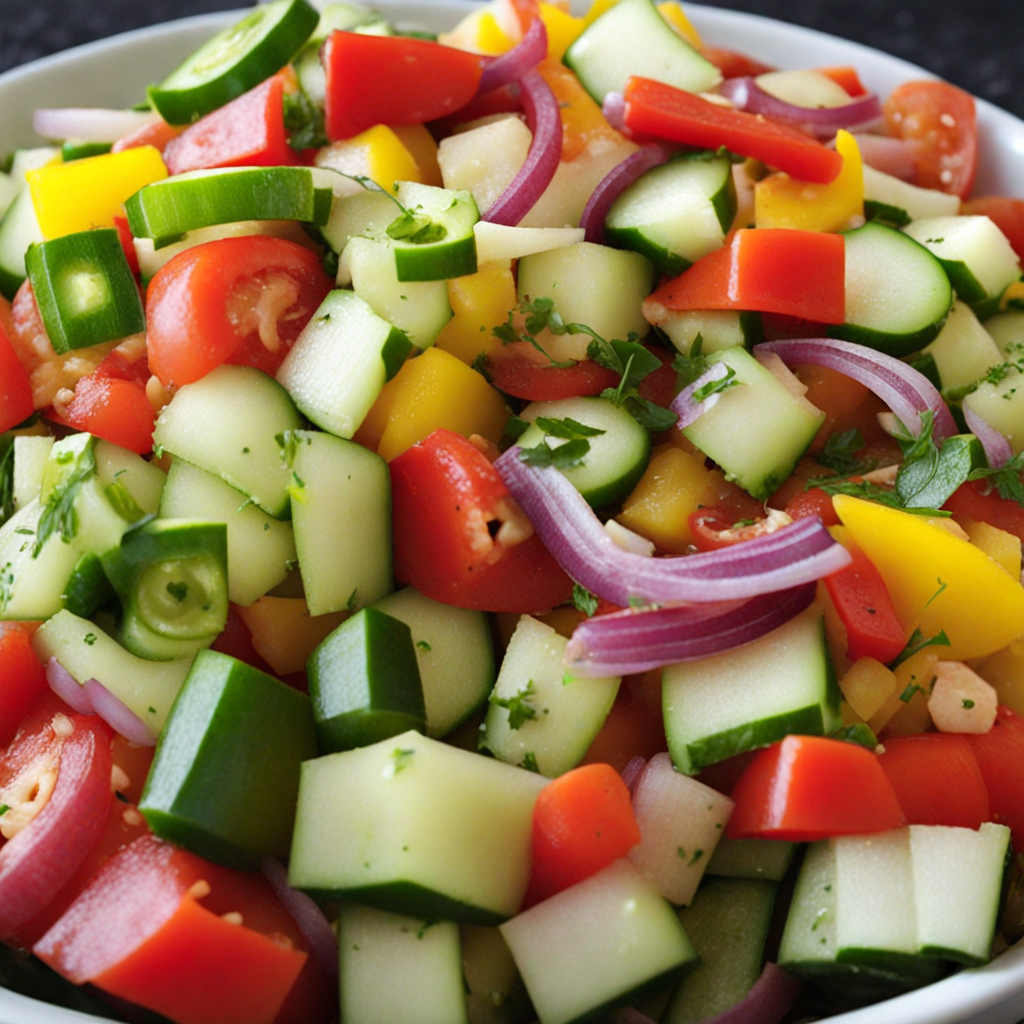Bourekas
Bourekas are a delightful pastry originating from the Middle East, with a strong presence in Israeli cuisine. Traditionally made from a flaky dough, similar to puff pastry, these savory treats are typically filled with an array of ingredients such as cheese, potatoes, spinach, or mushrooms. The combination of a crispy exterior and a warm, savory filling creates a satisfying contrast that is hard to resist. Bourekas are often enjoyed as a snack or appetizer and can be found in bakeries and markets throughout Israel, making them a staple of local street food culture. The preparation of bourekas involves rolling out the dough and cutting it into squares or circles, which are then filled with the chosen filling. After sealing the edges, they are brushed with egg wash for that golden-brown finish and baked until perfectly crispy. The versatility of bourekas allows for endless variations; while cheese and potato are the most common fillings, adventurous eaters can find bourekas stuffed with ingredients like sweet potato, pumpkin, or even spiced meat. Each bite offers a burst of flavor, making them a beloved choice for both locals and tourists alike. Though bourekas are often enjoyed plain, they can be served with a side of tahini or spicy tomato sauce for added flavor. Their portability and satisfying taste make them perfect for picnics, parties, or as a quick meal on the go. Whether you're enjoying them warm from the oven or at room temperature, bourekas embody the essence of Israeli comfort food, inviting everyone to savor their rich, flaky goodness.
How It Became This Dish
Origins of Burek The food known as בורקס (burek) has a rich and complex history that traces back several centuries, with its roots in the culinary traditions of the Ottoman Empire. This savory pastry is believed to have originated in the Balkans, where it was made with thin layers of dough, known as phyllo or yufka, which were filled with a variety of ingredients. Early versions of burek were likely filled with meat, cheese, or vegetables, showcasing the diverse agricultural bounty of the region. As the Ottoman Empire expanded, so did the culinary influence of burek, spreading through the Middle East, North Africa, and into Eastern Europe. The name "burek" itself is derived from the Turkish word "börek," which signifies a pastry made from rolled dough. The dish became particularly popular in the Balkans, where it evolved into various regional forms and names, including "burek" in Bosnia, "börek" in Turkey, and "burek" or "burekas" in Israel. The versatility of this pastry allowed it to adapt to local tastes and ingredients, leading to a myriad of fillings and cooking methods. \n\n Cultural Significance In Israel, burek has become a beloved street food and comfort food, often enjoyed by people from various cultural backgrounds. Its significance in Israeli cuisine can be attributed to the diverse immigrant populations that have settled in the country, particularly in the mid-20th century. Many Jews from North Africa, the Middle East, and Eastern Europe brought their culinary traditions with them, and burek found a lasting place in the fabric of Israeli food culture. Burek is more than just a snack; it symbolizes the blending of cultures and the shared culinary heritage of Israel. It is commonly found in bakeries, markets, and street stalls, where it is sold in various forms. The pastry is typically made with layers of dough that are filled with ingredients such as cheese, potatoes, spinach, or ground meat, and then baked until golden brown. This adaptability has allowed burek to resonate with a wide audience, making it a dish that can be enjoyed by Jews, Arabs, and tourists alike. \n\n Development Over Time As Israel's culinary scene has evolved, so too has the burek. Traditional recipes have been adapted to fit modern tastes, and new fillings have emerged that reflect contemporary dietary trends. The classic cheese and spinach filling remains a favorite, but other variations have gained popularity, such as sweet fillings made with fruit or chocolate. The introduction of vegan and gluten-free options has also made burek accessible to a broader audience, catering to the growing demand for inclusive food choices. This evolution reflects a broader trend in Israeli cuisine, which embraces innovation while respecting traditional roots. Street food culture has flourished in Israel, and burek has become a staple at food festivals and markets, often served with an array of dipping sauces that enhance its flavor. \n\n Regional Variations While the Israeli burek shares its origins with other regional varieties, it has developed distinct characteristics that set it apart. The use of local ingredients, such as fresh herbs and spices, adds a unique flavor profile to the Israeli version of the dish. Additionally, the technique of preparation may vary, with some opting for a spiral shape, while others prefer a more traditional rectangular form. In Israel, you can find burek in various forms, such as "burekas," which are often smaller and can be baked or fried. They are a popular choice for a quick snack or appetizer, often served with a side of pickles or salads. The diversity of fillings available also reflects the multicultural nature of Israeli society, with common fillings including feta cheese, mashed potatoes, and spiced minced meat. \n\n Burek in Modern Israeli Cuisine In contemporary Israeli cuisine, burek has found its way into high-end restaurants and gourmet cafes, where chefs experiment with new flavors and presentations. Some establishments offer upscale versions of the pastry, incorporating artisanal dough and gourmet fillings, elevating this humble street food to a culinary art form. The creative reimagining of burek showcases the ongoing dialogue between traditional and modern cooking techniques, as chefs seek to honor the past while pushing the boundaries of flavor. Moreover, the popularity of burek has transcended traditional meal times. It is now a common snack or light meal option, often enjoyed with a cup of coffee or tea. The pastry’s portability and ease of preparation make it a favorite among busy individuals seeking a quick yet satisfying meal. \n\n Global Influence The global rise of Israeli cuisine has also contributed to the popularity of burek outside of Israel. As Israeli chefs and food enthusiasts showcase their culinary heritage on international platforms, dishes like burek have gained recognition and appreciation worldwide. Food festivals and markets outside of Israel frequently feature burek, allowing people from different cultures to experience this delicious pastry. In addition, the diaspora communities continue to celebrate their culinary traditions, ensuring that burek remains an integral part of their identity. The dish has become a symbol of cultural resilience, representing the confluence of different food traditions across borders and generations. \n\n Conclusion From its Ottoman roots to its modern-day popularity in Israel and beyond, burek has endured as a beloved food that reflects the rich tapestry of cultural influences in Israeli cuisine. Its ability to adapt and evolve while maintaining its traditional essence is a testament to its enduring appeal. As burek continues to captivate the palates of people around the world, it serves as a delicious reminder of the shared culinary heritage that transcends borders and unites diverse cultures through the universal language of food.
You may like
Discover local flavors from Israel







